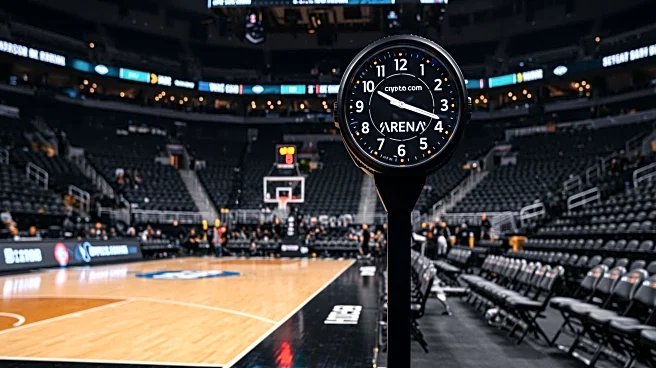What's Happening?
Crypto.com Arena, home to the Los Angeles Sparks and Lakers, has implemented a significant change by replacing its rectangular Tissot shot clocks with new circular-shaped clocks. This update is part of a broader initiative affecting all NBA, WNBA, and G-League teams, set to begin in the 2025-26 season. The new LED-infused shot clocks, developed in collaboration with Tissot, were first showcased during the NBA All-Star Game in February. The clocks feature RGB LED light strip technology, allowing for customizable colors to match team aesthetics. The NBA plans to incorporate a green-shaded countdown for coaches' challenges, enhancing the functionality of the shot clocks.
Why It's Important?
The introduction of the new circular shot clocks represents a significant technological advancement in basketball arenas, emphasizing the NBA's commitment to innovation. This change is expected to enhance the visual experience for fans and improve the functionality for teams and officials. The customizable color feature allows teams to personalize the clocks to match their branding, potentially increasing fan engagement. The integration of advanced LED technology also reflects the league's efforts to modernize its facilities, which could set a precedent for other sports leagues to follow.
What's Next?
The new shot clocks will be fully implemented in all NBA, WNBA, and G-League arenas starting in the 2025-26 season. As the Lakers prepare for their season opener in October, fans can expect to see the new clocks in action. The WNBA will officially adopt the change in 2026, aligning with the NBA's timeline. Teams and coaches will likely undergo training to familiarize themselves with the new countdown features, particularly the green-shaded countdown for coaches' challenges.
Beyond the Headlines
The shift to circular shot clocks may influence other sports to consider similar technological upgrades, potentially leading to a broader trend of innovation in sports facilities. The collaboration between the NBA and Tissot highlights the importance of partnerships in driving technological advancements, which could inspire other leagues to seek similar collaborations.

